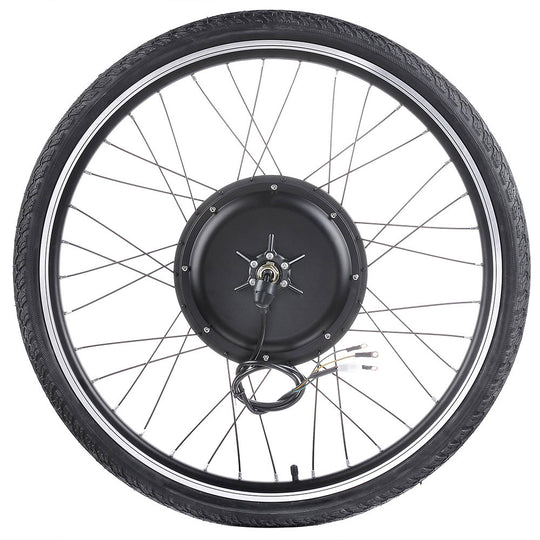valleygoat
1 mW
Been lurking here off and on for the last year, sifting through and trying to make sense of the plethora of options available for a build. I think I've finely narrowed things down to a cheap yescomusa 1000w 48V rear direct drive as the best fit for me. Would love a little input and review from all your experience before I order anything.
What I'm looking for:
Minimum 30 mile range (more obviously better) at ~20 mph on flat ground, with me (180lbs) on a 26" steel hardtail (rim brakes). ~30mph max speed sounds fun, but don't really need anything much faster. Also hoping for good acceleration to deal with stop and go on the first half of my commute.
Looking to shorten my now 9 mile work commute (all flat, secondary streets and bike paths) to 20-30 minutes such that I can conveniently bike it again and don't need to drive. I live in the cascade foothills, so having the ability to handle short 10-15% grades a plus when running errands (but not essential for the flat commute). Also, I live in Oregon, so 6 months out of the year will be wet and I'll want a motor/battery that lets me still commute if drizzling. I'm also thrifty. I'm fine (and generally even prefer) a gritty, diy set-up that takes a little futzing from time to time but has some real pep, over some slick, polished solution that costs twice as much.
What I'm planning:
Does this all seem like it will do what I need? Any other motor/battery/controller or other part options I should be considering?
Thanks!
What I'm looking for:
Minimum 30 mile range (more obviously better) at ~20 mph on flat ground, with me (180lbs) on a 26" steel hardtail (rim brakes). ~30mph max speed sounds fun, but don't really need anything much faster. Also hoping for good acceleration to deal with stop and go on the first half of my commute.
Looking to shorten my now 9 mile work commute (all flat, secondary streets and bike paths) to 20-30 minutes such that I can conveniently bike it again and don't need to drive. I live in the cascade foothills, so having the ability to handle short 10-15% grades a plus when running errands (but not essential for the flat commute). Also, I live in Oregon, so 6 months out of the year will be wet and I'll want a motor/battery that lets me still commute if drizzling. I'm also thrifty. I'm fine (and generally even prefer) a gritty, diy set-up that takes a little futzing from time to time but has some real pep, over some slick, polished solution that costs twice as much.
What I'm planning:
- 1000w/48v xcerries/yescomusa rear direct drive for $169-197. Been reading lots of posts about the yescomusa 1000w 48v read direct drives by wesnewell and others with great interest, and they seem like they right price/performance for me. Is the lcd and PAS version of their kit worth it (or things I'd probably end up wanting to upgrade anyway)?
- Battery. Thinking of a UPP pack. Maybe this 52V 17Ah 30A continuous triangle pack for $335. Is a 30A discharge enough with the yescom?
Was seriously considering RC lipos for a while (and love that people are making them work). But, in the end I'm not sure if I can deal with both 1) an elaborate, multi-piece charging kit, and 2) the need to charge in a fire safe area. Either one by itself would be fine, but I don't think I have an easy space in my yard (that my wife wouldn't object to) that I can store and keep dry a bunch of fragile electronics where I also don't mind if they catch fire.
- Controller? I see folks running beefed up 72v controllers with the yescom kits. What's the primary benefits over the stock controller? If I upgrade, I assume I also need to find a battery with a higher continuous discharge rating?
- Torque arm. Probably one Grin v4 although it seems rather pricey on a budget build.
Does this all seem like it will do what I need? Any other motor/battery/controller or other part options I should be considering?
Thanks!



